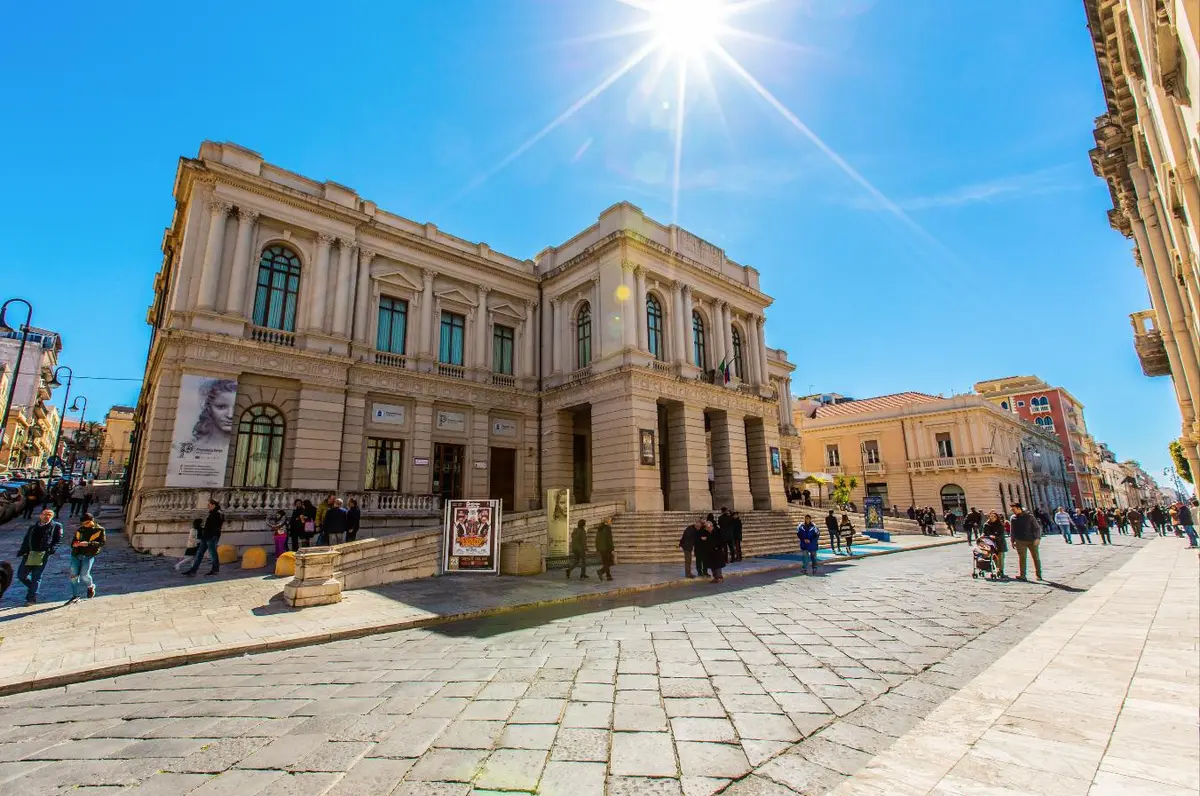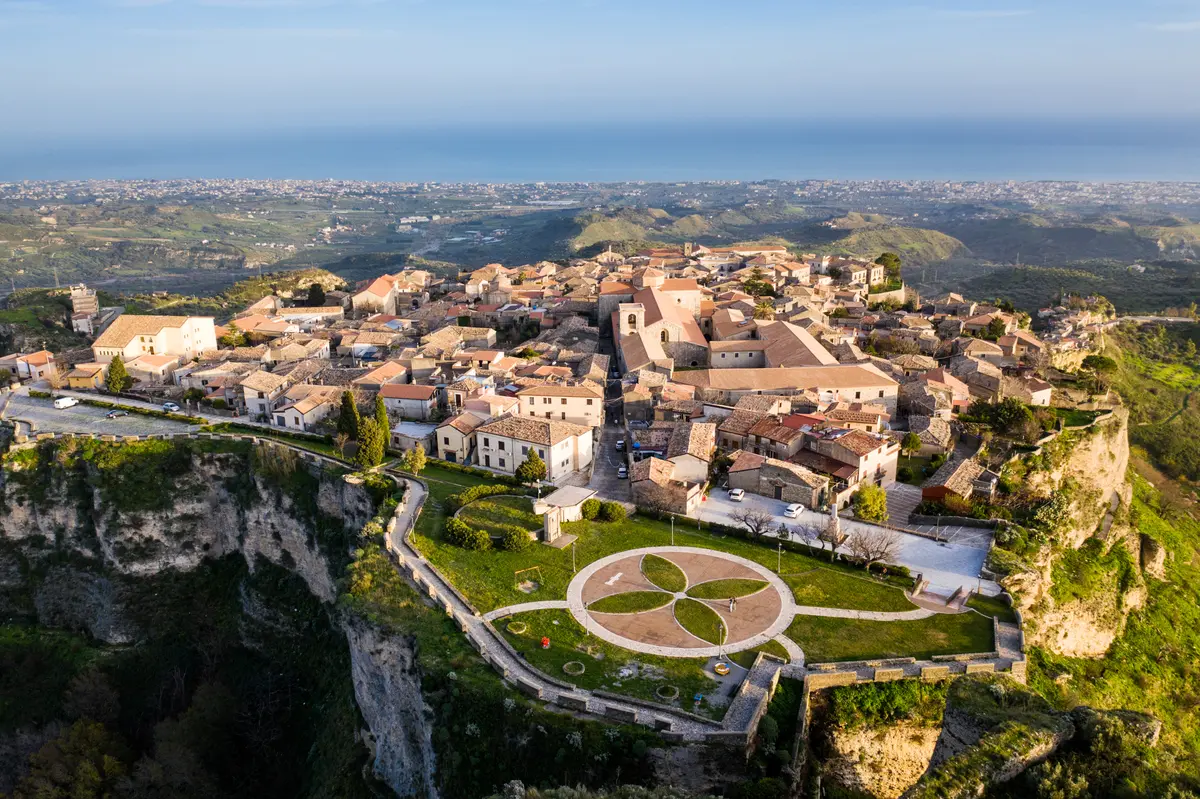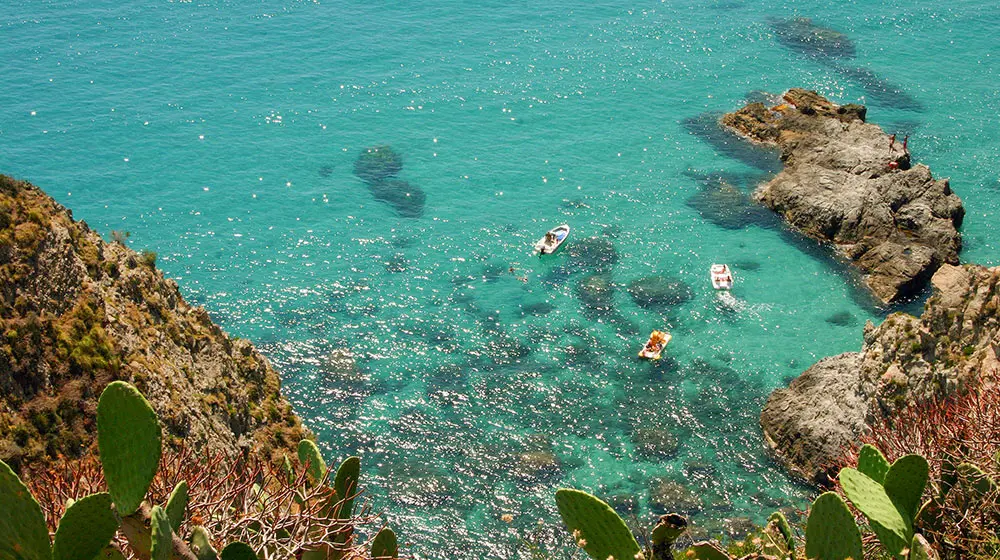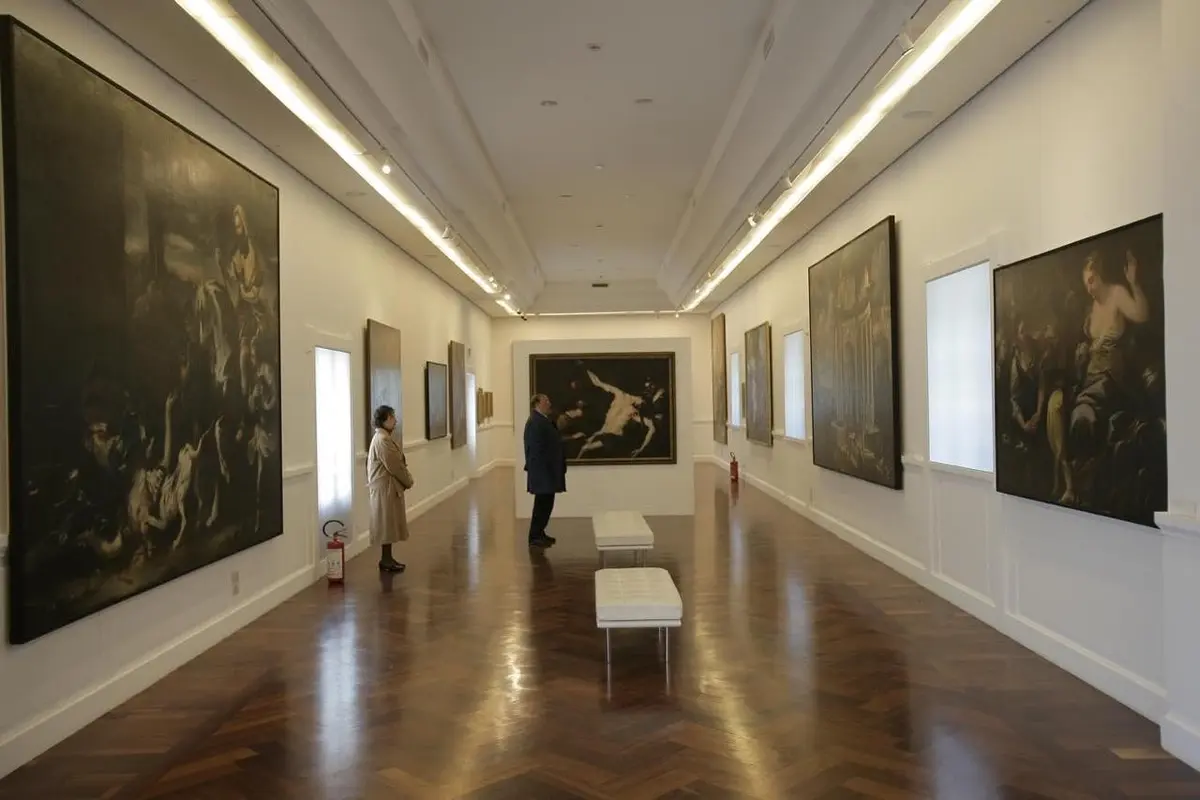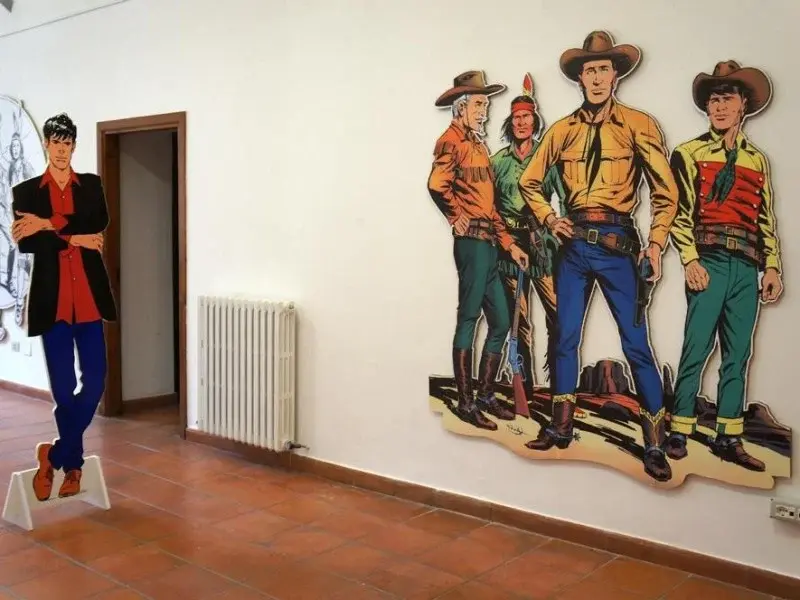On the trail of Bernardino Telesio in Cosenza
Tour of Cosenza Vecchia among the places of Bernardino, Cosenza philosopher

Art and Culture
Teatro Rendano e statua Bernardino Telesio, Cosenza - Regione Calabria
Among the great names that Calabria has consigned to the history of Western thought is that of Bernardino Telesio, a Cosenza-born philosopher from the 16th century.
His studies on nature as a world unto itself and on the preservation of the spirit through virtue marked a very important step in modern Western philosophy. Giordano Bruno, Descartes, Francis Bacon and Tommaso Campanella drew inspiration from his doctrine and his main work, "De rerum natura iuxta propria principia" (1565).
Bernardino, a Cosenza-born philosopher, worked in his hometown at the Accademia Cosentina, known as the "Accademia Telesiana", enriching the city of Cosenza with the legacy of his writings and a series of historical and monumental places linked to his presence.
Not just for ‘insiders’ and philosophy enthusiasts, the tour in the footsteps of Bernardino Telesio is within everyone's reach and allows you to immerse yourself in the 16th-century atmosphere of the city, discovering places in the historic centre (Cosenza Vecchia) with eternal charm.
The philosopher Bernardino Telesio
Telesio, Cosenza and the history of philosophy and theology in Calabria are one and the same.
Born in 1509 into a family of intellectuals and humanists, Bernardino Telesio was first educated under the example of his uncle Antonio, and then continued his studies in the main Italian cities (Milan, Rome, Venice and Padua, where he obtained his doctorate).
Here Bernardino Telesio begins to develop his critique of Aristotelian philosophy: the supreme good of man does not consist in the exercise of reason, as Aristotle wants, but in his own physical preservation. Ethics must favour it, directing it towards pleasure and not pain.
The symbol of his work in the city is still the Accademia Cosentina, one of the very first academies in Europe, the second in the Kingdom of Naples (1511).
This prestigious academy was founded by the Calabrese Aulo Giano Parrasio, under whose rectorate Bernardino was trained, and then took over as director upon the master's death (1534), when the same institute changed its name from Accademia Parrasiana to Accademia Telesiana.
The institute collects original works and manuscripts of universal value: 53 editions of incunabula (first Gutenberg printed books), illuminated choir books from the 16th century, manuscripts and parchments. In the 19th century, the Public Library of Cosenza was established within it, which is still today the reference point for those wishing to study philosophy and theology in depth, contributing to the prestigious definition of Cosenza as the ‘Athens of Calabria’.
The places of Bernardino Telesio in Cosenza
What are the places of Bernardino Telesio in Cosenza besides the Accademia Cosentina?
It is enough to take a walk in the historic centre of Cosenza Vecchia to discover them all, starting from the house where the philosopher was born, in Piazza Berardi 1 (which cannot be visited), passing through the twentieth-century building that today houses the academy and library, in Piazza XV Marzo, in neoclassical style characterised by the typical pediment with the wisdom symbol on a gold background.
This square (also known as Piazza Prefettura) is the Telesio site par excellence: bordered by the Institute of Philosophy and the elegant "Alfonso Rendano" Theatre on the adjacent side, it houses the Monument to Bernardino Telesio in the centre.
The sculpture, created by Achille Orsi in 1914, depicts the philosopher in a meditative attitude, holding a book and a pen. The bronze statue rests on a granite plinth, itself decorated with bronze bas-reliefs depicting scenes from the philosopher's life, including the explanation of his doctrine and his arrest during the Sack of Rome in 1527.
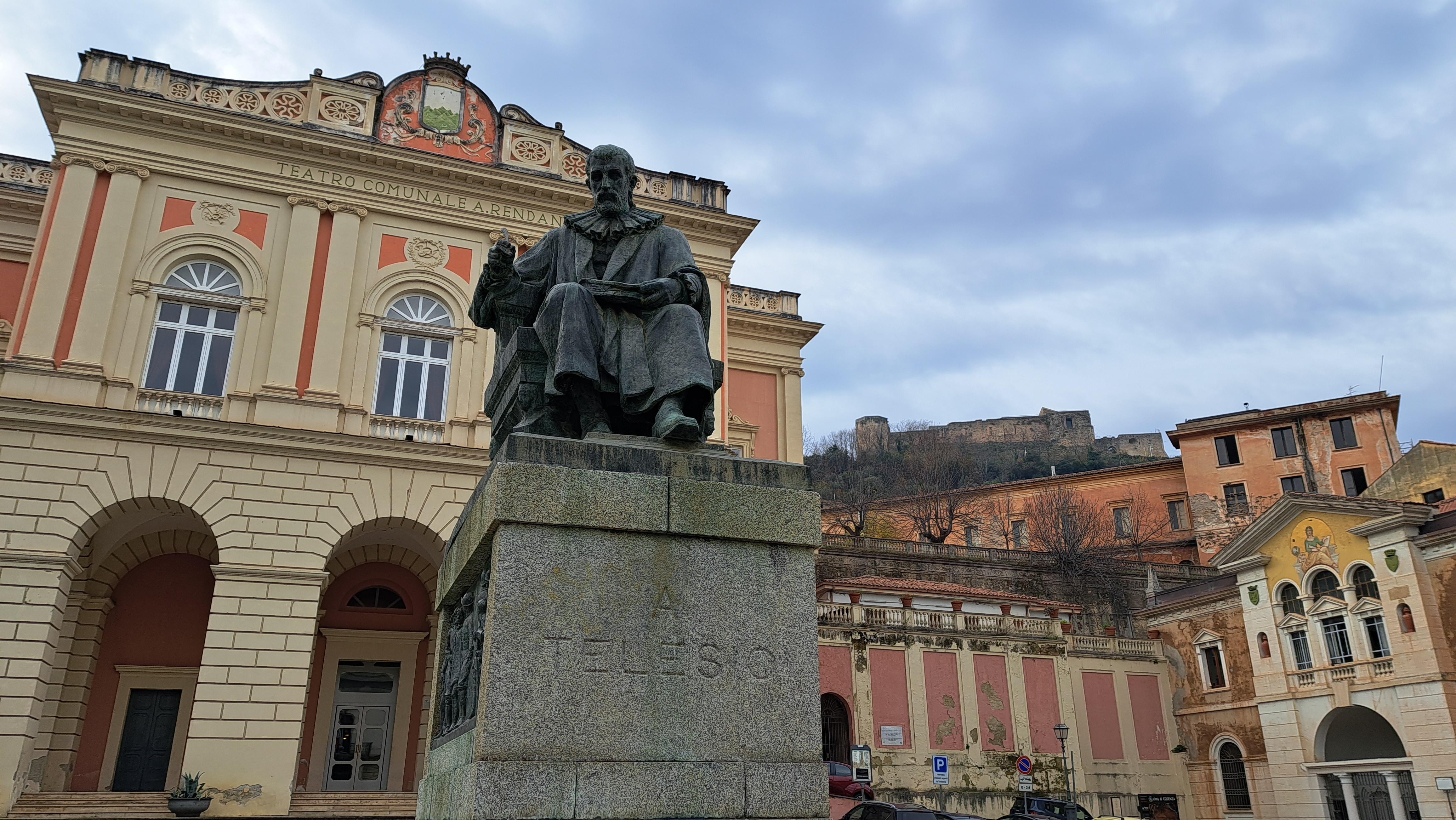
The nearby Liceo Classico and the main street of Cosenza Vecchia are also dedicated to Bernardino, along which we can admire some of the city's oldest buildings, first and foremost the Cathedral, dedicated to Santa Maria Assunta, among the UNESCO World Heritage Sites in Calabria, guardian of the precious Byzantine icon of the Madonna del Pilerio.

Also on Corso Telesio are numerous historic shops and establishments, such as the Caffè Telesio of the same name and the Gran Caffè Renzelli, a historic bar-pastry shop since 1803, which has dedicated its special "Torta Telesio" to Bernardino Telesio, a soft cake with the unusual use of yellow lupins, an ancient ingredient of the time, combined with almonds, sour cherries and apricots.
Continuing the tour in the footsteps of Bernardino Telesio in Cosenza, an obligatory stop is the Monumental Complex of San Domenico.
Situated at the confluence of the two rivers, Crati and Busento, the building of the former Dominican convent is the meeting place of Bernardino Telesio and Tommaso Campanella, the other great Calabrian philosopher hosted within these very walls (1588) during his stay in Cosenza.
The 15th-century building belonged to the Sanseverino family and the façade still has elements of the original construction, such as the rose window, the entrance arch and the two Renaissance chapels. Today, it houses the BoCs Art Museum, a contemporary art museum with a collection of works from artistic residencies in the city.
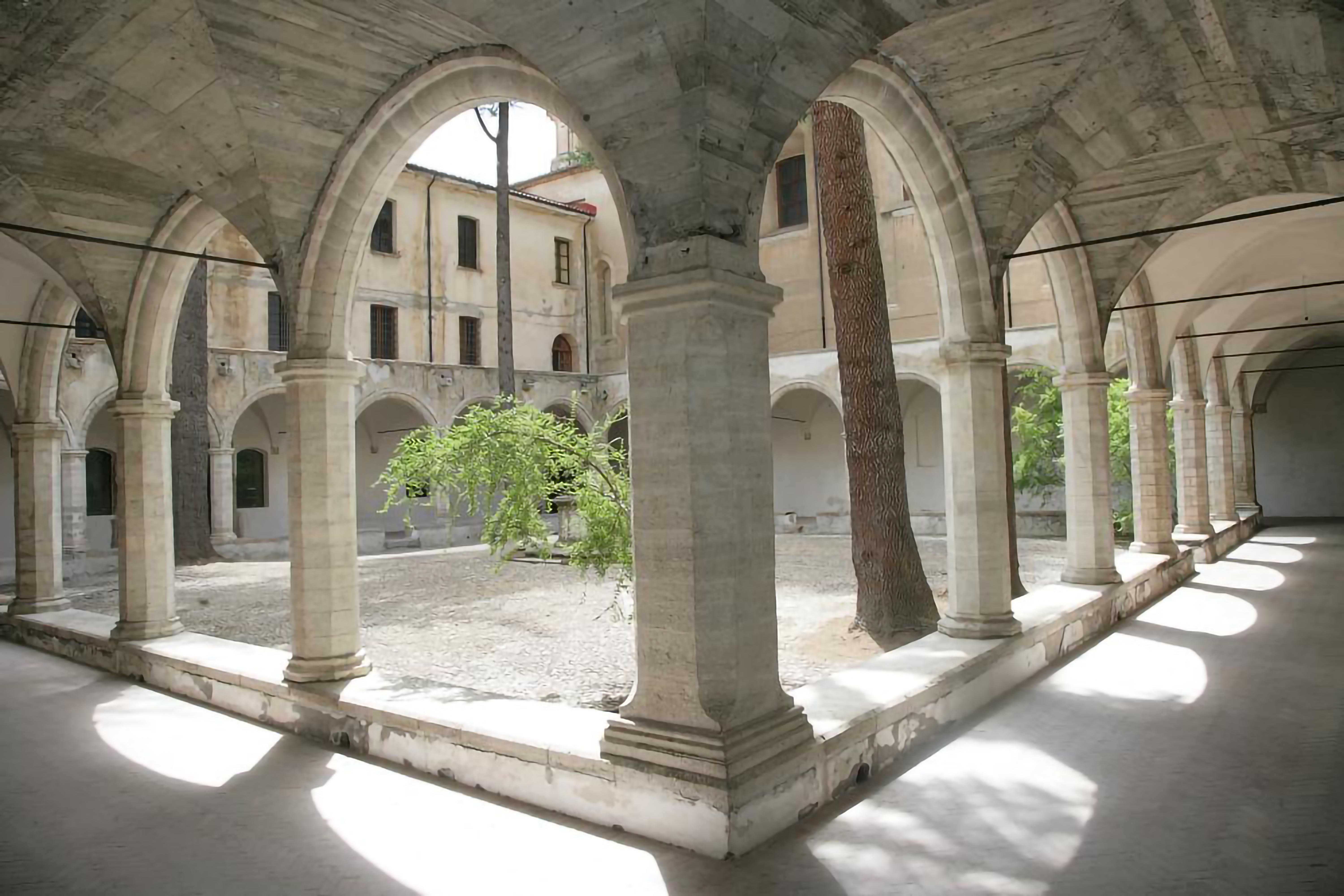
https://calabriastraordinaria.it/en/news/on-the-trail-of-bernardino-telesio-in-cosenza
